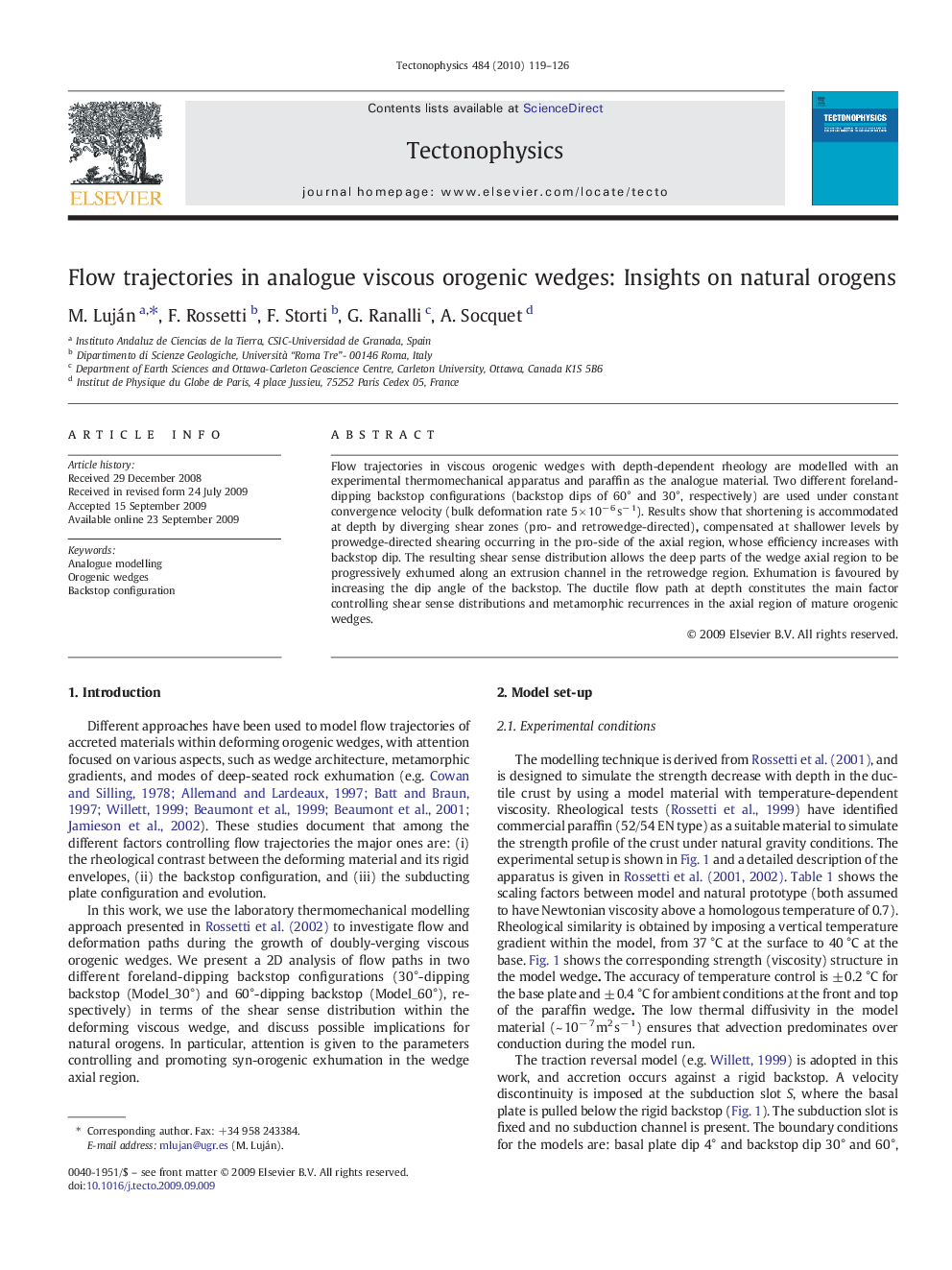| Article ID | Journal | Published Year | Pages | File Type |
|---|---|---|---|---|
| 4693726 | Tectonophysics | 2010 | 8 Pages |
Flow trajectories in viscous orogenic wedges with depth-dependent rheology are modelled with an experimental thermomechanical apparatus and paraffin as the analogue material. Two different foreland-dipping backstop configurations (backstop dips of 60° and 30°, respectively) are used under constant convergence velocity (bulk deformation rate 5 × 10− 6 s− 1). Results show that shortening is accommodated at depth by diverging shear zones (pro- and retrowedge-directed), compensated at shallower levels by prowedge-directed shearing occurring in the pro-side of the axial region, whose efficiency increases with backstop dip. The resulting shear sense distribution allows the deep parts of the wedge axial region to be progressively exhumed along an extrusion channel in the retrowedge region. Exhumation is favoured by increasing the dip angle of the backstop. The ductile flow path at depth constitutes the main factor controlling shear sense distributions and metamorphic recurrences in the axial region of mature orogenic wedges.
